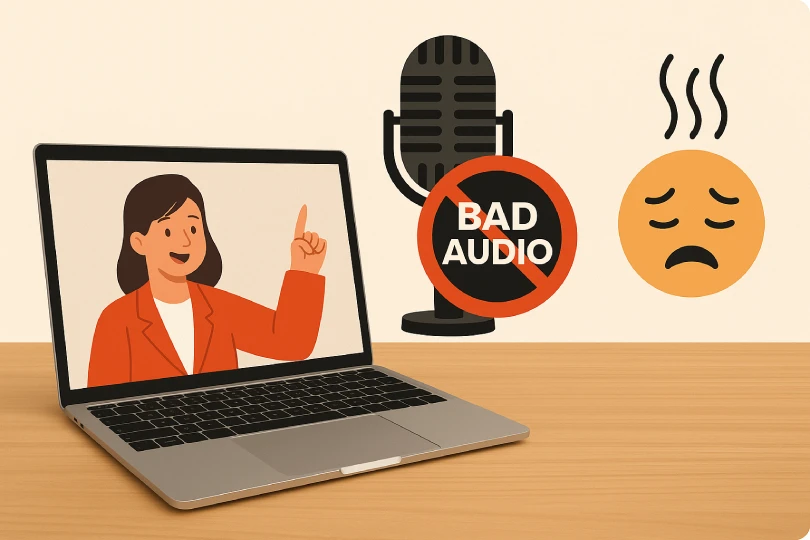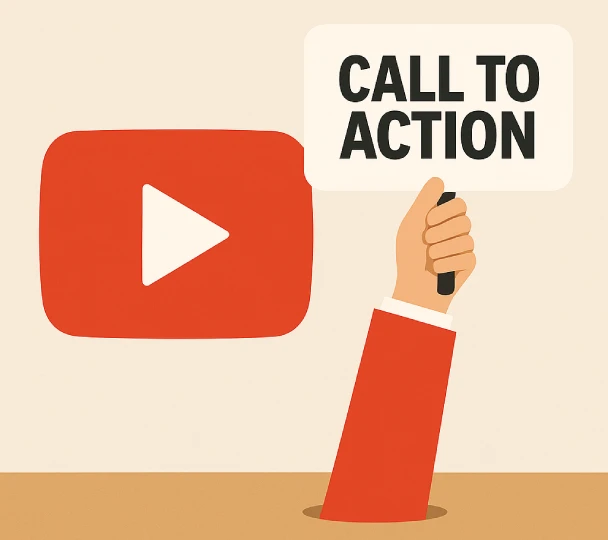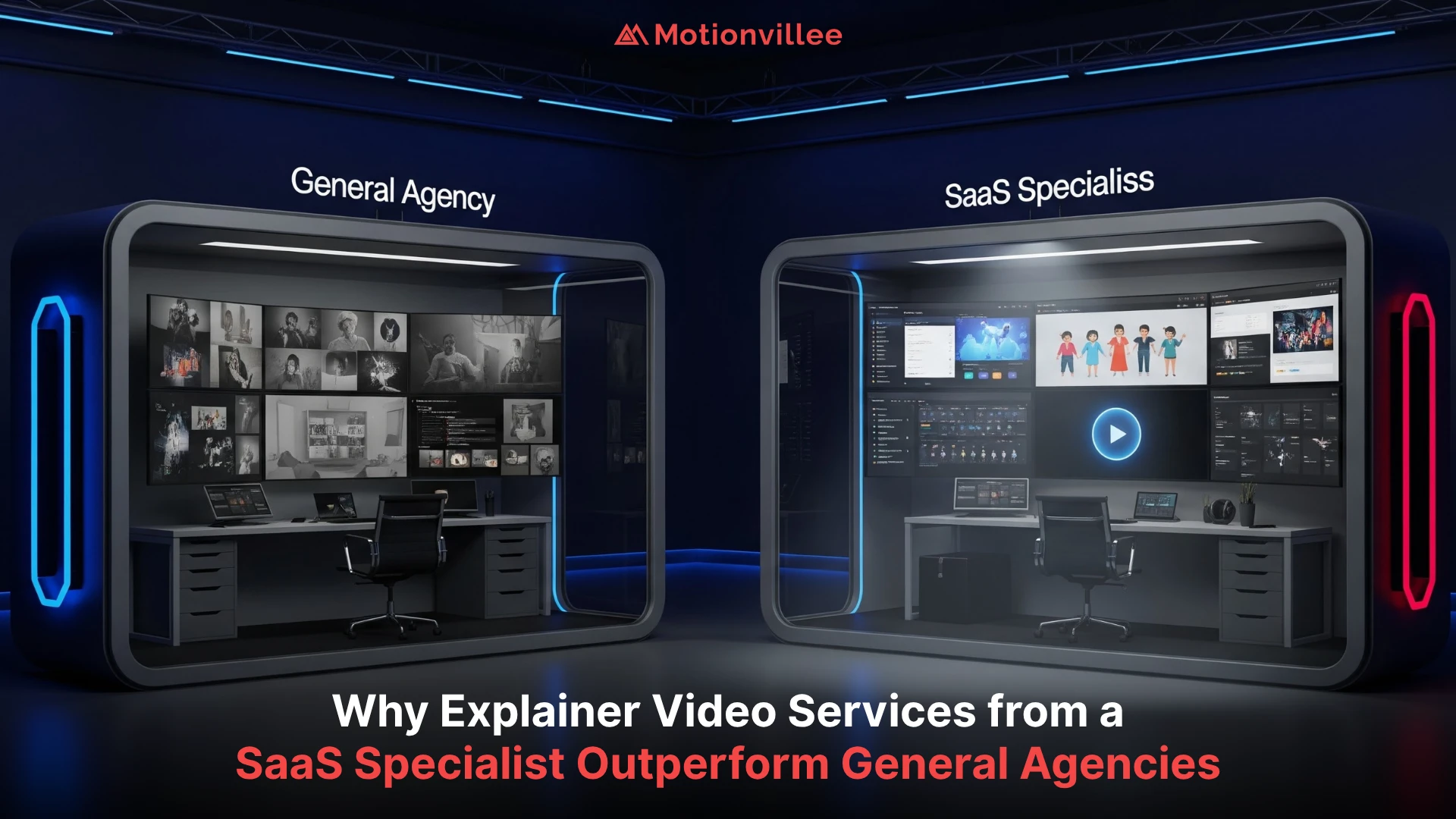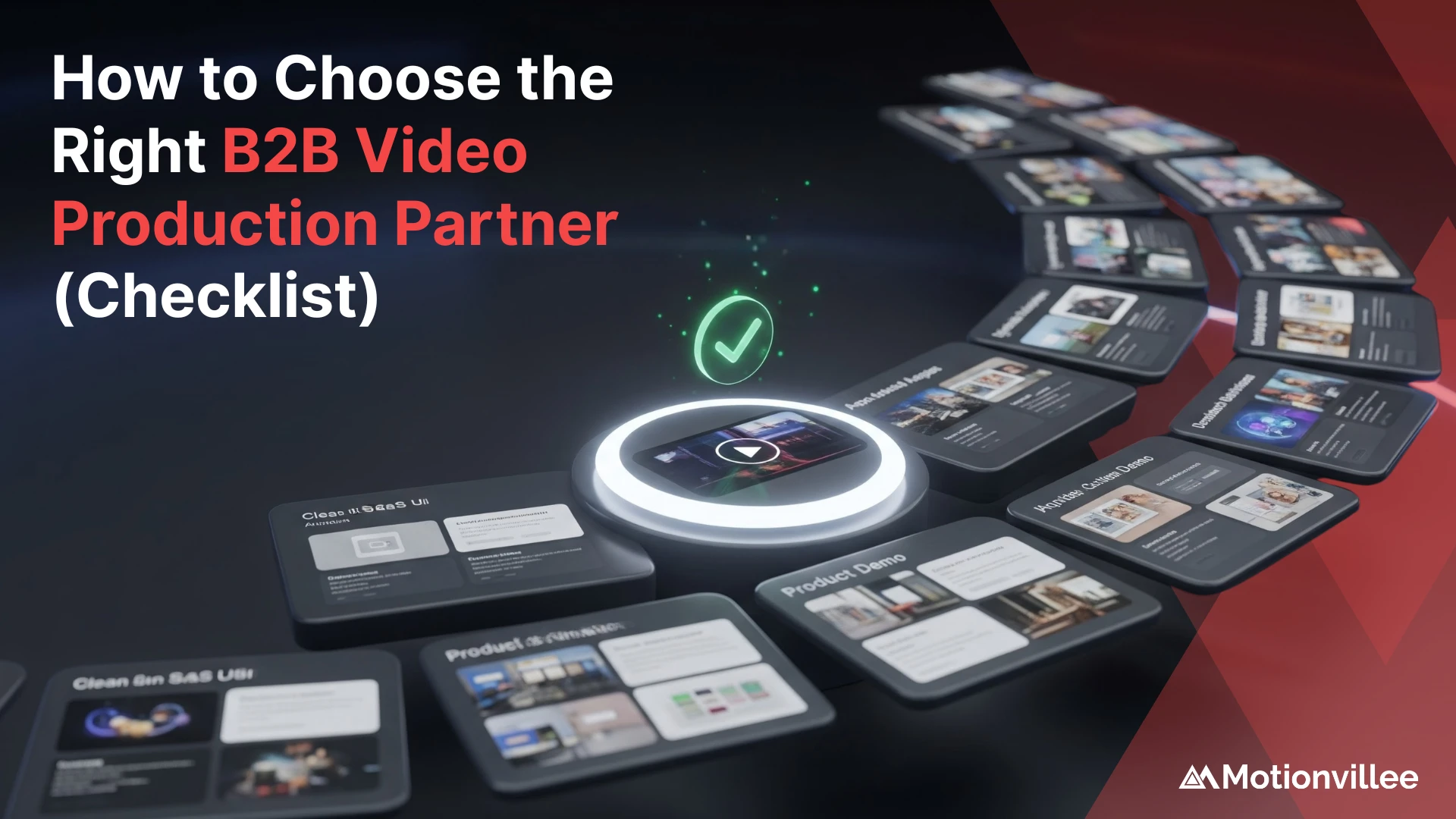Explainer videos have become a go-to format for simplifying business communication. They help break down complex products, services, or ideas in a way that’s easy to understand and remember. But even with their growing popularity, many of these videos miss the mark due to common explainer video mistakes.
It’s not always about the visuals or animation quality. Often, it comes down to unclear scripting, poor structure, or skipping essential steps in the production process. These missteps can limit the effectiveness of your video and impact your broader video marketing for businesses.
This blog will walk you through eight common mistakes companies make when creating explainer videos and how to avoid them. Whether you’re planning a launch or refining your content strategy, keeping these points in mind can lead to better engagement and more clarity in your communication. A thoughtful explainer video production process can make all the difference.
Mistake 1 – No Clear Goal or Purpose
One of the most common reasons explainer videos underperform is the lack of a clear objective. If your video doesn’t know what it’s trying to achieve, your audience won’t either.
Many businesses jump straight into production without asking the most basic question: What is this video supposed to do? Is it meant to generate leads, explain a product feature, support sales conversations, or improve onboarding?
Without this clarity, the video ends up being too broad, unfocused, or worse, confusing.
Quick ways to stay focused:
- Define one primary goal before you begin scripting
- Keep your messaging aligned with that goal throughout
- Avoid packing too much information into one video
- Let your business objective guide your call to action
A well-defined purpose gives your explainer video structure, clarity, and impact. It helps your audience understand and act on what you are offering.

Mistake 2 – Weak or Confusing Script
One of the most damaging explainer video mistakes is starting with a weak or unclear script. Even the most visually impressive video will fall flat if the message isn’t sharp, structured, and easy to follow.
A poor script leads to confusion, low viewer retention, and missed opportunities. Some common problems include:
- No engaging hook in the opening few seconds
- Overuse of industry jargon that alienates non-technical viewers
- No logical structure or flow from problem to solution
- Lack of clarity in the core message
Your script is the foundation of the entire video. If it doesn’t communicate clearly, the viewer won’t stick around.
Tips to avoid this mistake:
- Start with a hook that relates to your audience’s pain point
- Use everyday language and explain terms simply
- Follow a structure: problem → solution → how it works → next step
- Keep sentences short and punchy
Think of the script as a conversation with your viewer. Clear writing leads to clear understanding, and that leads to better results.
Mistake 3 – Overloading with Information
Trying to say too much in one video is one of the most common mistakes businesses make. Explainer videos are meant to simplify, not overwhelm. When too many ideas are packed into a single video, the message gets lost and the viewer tunes out.
Animated explainer videos are effective because they deliver one clear idea at a time. But that power is lost when the script jumps between features, benefits, company history, and multiple CTAs—all at once.
Signs your video might be overloaded:
- It’s longer than 2–3 minutes without a clear reason
- Viewers drop off before the halfway mark
- You try to explain multiple products or services in one go
Simple ways to fix this:
- Stick to one core message per video
- Use a series of shorter videos for complex topics
- Prioritize what your audience needs to know first
Animated explainer videos work best when they are focused and structured. A clear message leaves a lasting impact, too much information only leads to confusion.

Mistake 4 – Ignoring Visual Branding
One of the more overlooked explainer video mistakes is neglecting visual branding. When a video uses random colors, inconsistent fonts, or visuals that don’t reflect the company’s personality, it quickly becomes forgettable.
Your video is an extension of your brand. If it doesn’t look and feel like “you,” viewers won’t remember who it came from. Strong branding builds recognition and trust over time, especially when your audience sees it across platforms.
What poor visual branding looks like:
- Fonts and colors don’t match your website or logo
- The tone or animation style feels out of sync with your industry
- No consistent visual structure across your video content
How to avoid this:
- Use your brand guidelines for all visual elements
- Stick to a defined color palette and typography
- Consider creating brand storytelling videos that are both consistent and emotionally engaging
A well-branded video is more than just design. It reinforces your identity in the viewer’s mind and makes your content more memorable.
Mistake 5 – Poor Voiceover and Audio
A video can have great visuals, a strong message, and a clear script, but if the voiceover or audio quality is poor, it instantly loses impact. This is one of the most common explainer video mistakes, and it can seriously affect how your brand is perceived.
A flat or robotic tone, background noise, or unclear pronunciation makes it hard for viewers to stay engaged. Worse, it may come across as unprofessional or rushed.
Signs of bad audio in a video:
- The speaker’s tone doesn’t match the message
- Audio levels are inconsistent or distracting
- Background noise, harsh breaths, or unclear speech
How to avoid this mistake:
- Always use a professional voiceover artist who understands pacing, clarity, and tone
- Match the voice to your audience, friendly for B2C, polished for B2B
- Don’t record on a phone or laptop mic. Invest in clean, studio-quality sound
A professional voiceover can elevate your video from average to impactful. It ensures that your message is heard, understood, and remembered.

Mistake 6 – Animation Without Purpose
One of the most overlooked explainer video mistakes is using animation just for the sake of it. While animated visuals are engaging, adding too many flashy effects or irrelevant movements can distract viewers and weaken your core message.
Animation should always have a purpose. Whether you’re explaining a product, service, or concept, every visual element needs to support what you’re saying, not compete with it.
Common signs of ineffective animation:
- Random transitions or spinning text with no context
- Characters or elements moving without reason
- Visuals that don’t align with your brand tone or story
What to do instead:
- Use motion to emphasize key points or guide viewer focus
- Stick to a consistent visual style aligned with your brand
- Keep it simple and let the message lead the animation
Well-planned animated explainer videos feel clear, intentional, and easy to follow. When produced as part of a complete video package, each scene is crafted to enhance understanding, not confuse it. Smart animation elevates your message, without overwhelming your audience.
Mistake 7 – No Call-to-Action (CTA)
One of the most common explainer video mistakes is forgetting to include a clear call-to-action. You’ve captured attention, explained your offer, and built interest. But if the video ends without guiding the viewer on what to do next, you lose momentum.
A strong CTA tells your audience exactly what to do:
- Visit your website
- Book a demo
- Schedule a call
- Download a guide
- Sign up for a trial
Without this step, even a well-produced video may fail to convert.
What makes a CTA effective?
- It is direct and easy to follow
- It aligns with the video’s goal
- It fits naturally into the script and visual layout
Also, make sure your CTA is compatible across platform-ready video formats like YouTube, Instagram, email, and landing pages. Whether it’s a clickable link, an end screen prompt, or a voiceover direction, it should be clear and actionable.
The most effective explainer videos don’t just inform. They prompt the viewer to take the next step with confidence.

Mistake 8 – Not Optimizing for Platforms
A common mistake businesses make is creating one video and using it everywhere without adjustments. But not all platforms are the same. What works on YouTube might not perform well on Instagram or your landing page.
Different platforms require different formats, lengths, and even pacing.
Here’s what to consider when optimizing your explainer video:
- Social media: Keep it short, mobile-friendly, and attention-grabbing within the first 3 seconds.
- Landing pages: Focus on clarity, trust, and direct messaging.
- YouTube: Slightly longer videos are fine, but make sure your content is searchable and informative.
- Email marketing: Use teaser clips or GIFs to lead to the full video.
If your video isn’t tailored to fit the platform, you risk lower engagement, reduced watch time, and missed opportunities.
The fix? Plan for platform-ready versions during production. This allows you to repurpose one strong video into multiple high-performing assets that match your campaign goals across channels.
Optimizing for platforms doesn’t just boost views. It increases the chances of your message landing with the right people in the right place.
Conclusion
Explainer videos are powerful tools, but small mistakes can lead to lost time, poor engagement, and missed business opportunities. Let’s recap the 8 common explainer video mistakes:
- No clear goal or purpose
- Weak or confusing script
- Overloading the video with too much information
- Ignoring visual branding
- Poor voiceover and audio quality
- Animation without purpose
- No clear call-to-action (CTA)
- Not optimizing for different platforms
Avoiding these issues starts with two things: clear strategy and thoughtful execution. A good explainer video doesn’t just look great. It delivers the right message to the right audience in the right format.
Whether you are creating your first video or reworking an old one, these small improvements can make a big difference in how your audience responds.
If you are serious about getting results from your video marketing, it might be time to bring in the experts. Schedule a Call with the Motionvillee team to plan your next explainer video the right way, from concept to delivery.






